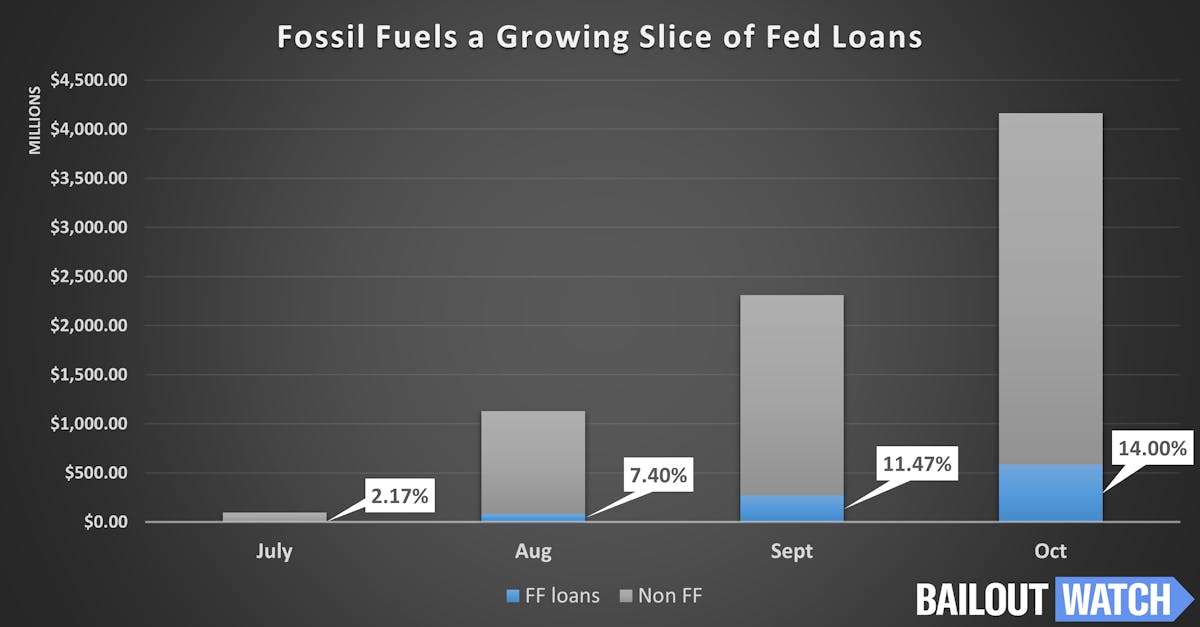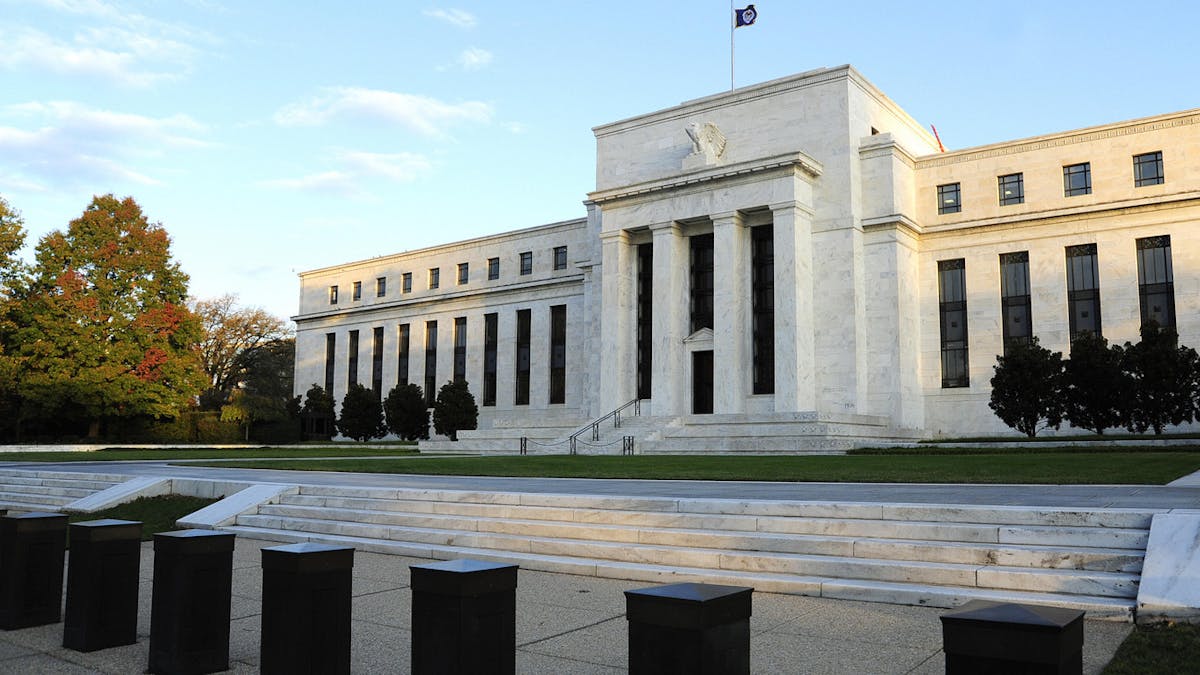The Federal Reserve continued ramping up a key fossil-fuel bailout program in October, more than doubling the government-subsidized loans extended to the industry, even as it called out climate change as a financial risk in its biannual financial stability report and is reportedly looking to join a network of central banks addressing climate risks. October also witnessed a record number of oil firm bankruptcy-related debt as well as major consolidation within the oil and gas industry.
Now, with Republicans pushing to end the Fed programs and policymakers focused on negotiations toward a second major stimulus package, the Fed has expanded eligibility for the program, called the Main Street Lending Program, which was designed specifically with the fossil fuel industry in mind.
The Fed backed $317 million in loans to 13 fossil fuel companies in October, about 17% of the total dollars lent out under the program, a BailoutWatch analysis of new Fed data has found. That’s a sharp increase from the $182 million in loans to fossil fuels in September, which accounted for 15% of that month’s new loans.
In all, the Fed has now backed $582 million in loans to 37 companies focused on fossil fuel investment, oilfield services, coal support, and extraction. That dwarfs the support extended to renewable energy companies, which received a single loan of $1.15 million in October. Clean energy now comprises less than 2% of the overall loan portfolio, compared with 14% for fossil fuels. You can find the full list of companies here.

Since July, fossil fuels have grown from 2 percent to 14 percent of the Fed's loan portfolio.
Fossil fuels’ emergence as a core component of the Fed’s portfolio follows a successful push by oil and gas lobbyists and allies to make the loans available even to companies with deep financial problems.
The companies are obtaining financing through the Fed’s Main Street Lending Program, which aims to help bridge the economic downturn for mid-sized businesses that were healthy before the pandemic. The loans are originated by banks, but the Fed buys them — and assumes the risk they will fail — if banks adhere to strict guidelines regarding borrowers’ finances.
The Fed initially proposed rules that would have excluded many oil and gas companies already struggling with heavy debt burdens and repayment deadlines. Fossil fuel trade groups pushed back, admitting that many drillers were on the brink of failure for reasons unrelated to COVID, but said companies still should be cushioned from the resulting recession and reduction in energy demand.
The Fed eventually yielded, opening the program to more heavily indebted companies and those that would use the new loans to repay old ones. Energy Secretary Dan Brouillettte said he had worked with Treasury and the Fed to increase drillers’ access to the program.
Now in its fourth month, the Fed’s Main Street Lending Program has bought loans worth $4.2 billion, up 80% from the month before. At the end of October, the Fed lowered the minimum loan size in the program to $100,000 from $250,000, further broadening the range of companies that are eligible.
The program, one of several emergency-lending facilities established by the Fed under the $2.2 trillion CARES Act stimulus package, is set to expire on December 31. The Fed has the authority to extend them beyond that date. But the programs involve money from President Donald Trump’s Treasury Department, which faces pressure from Republicans in Congress to wind down the emergency-lending before President-Elect Joe Biden is sworn in in January.
